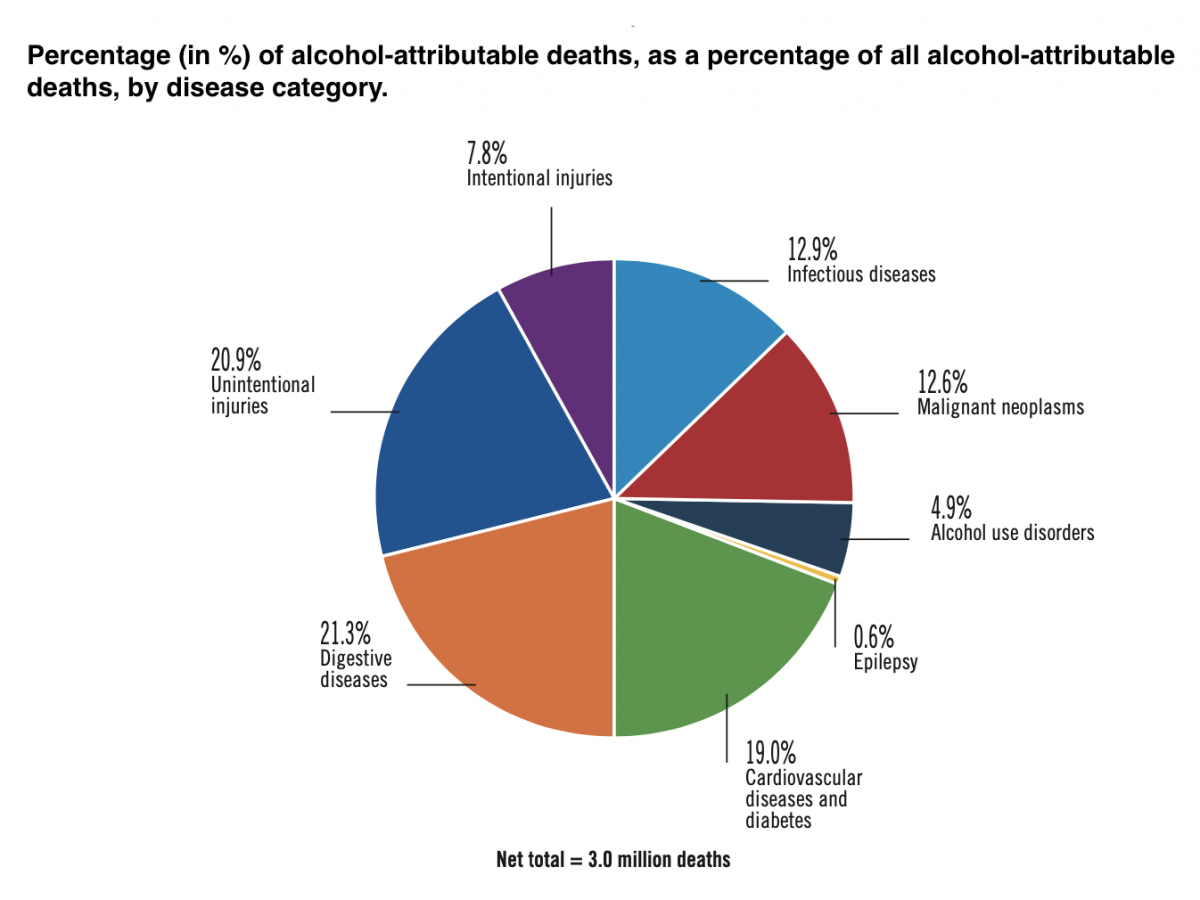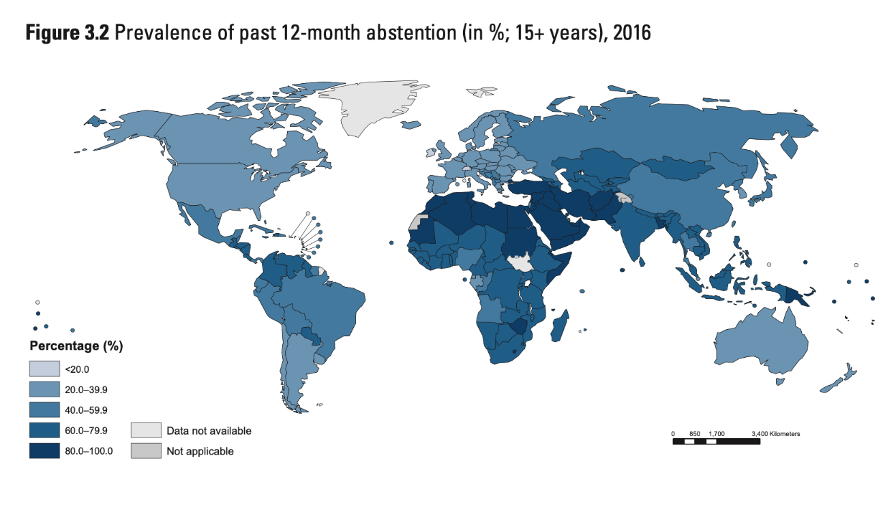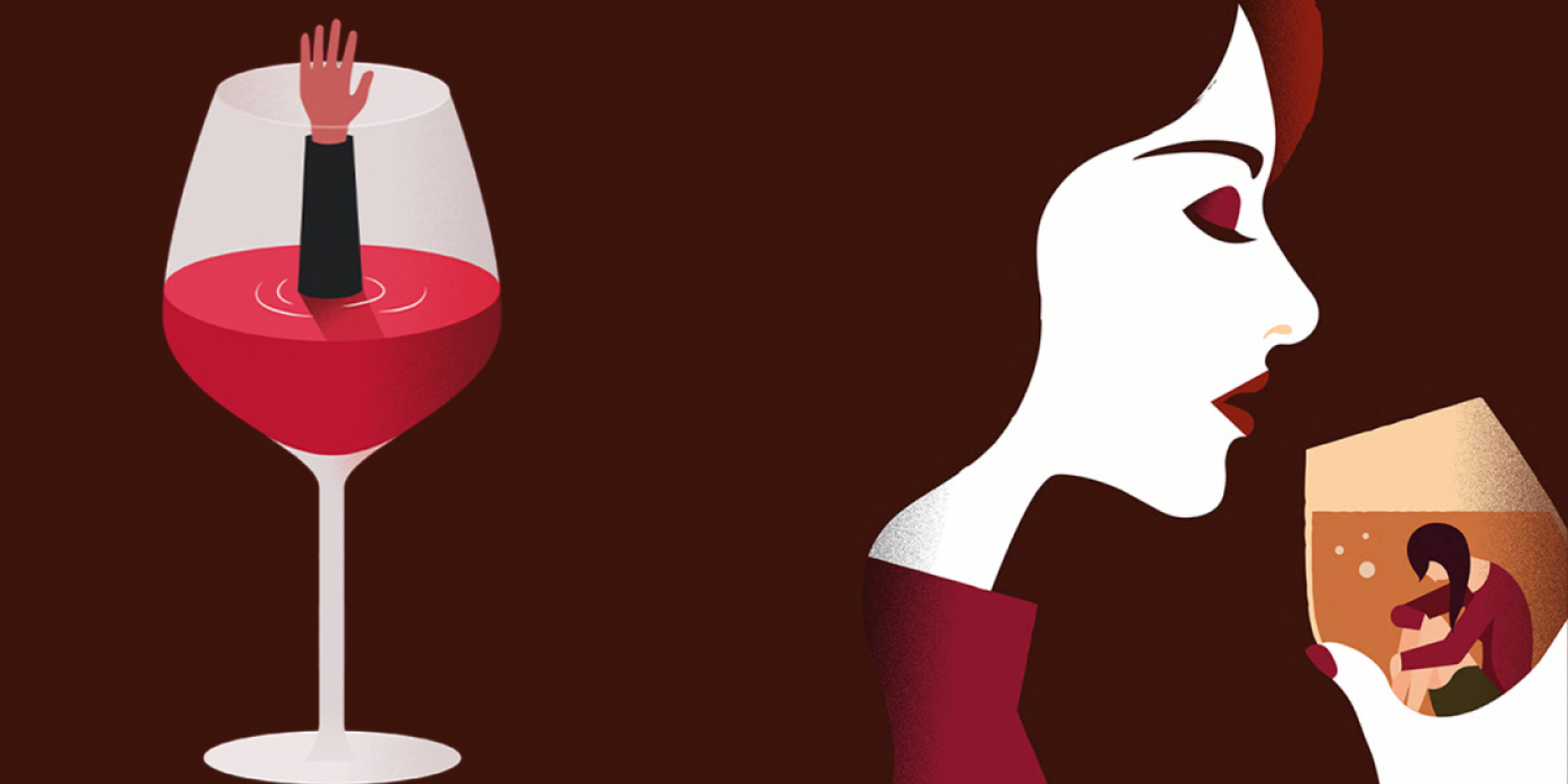Fast Facts
-
3 million people die around the world every year from alcohol use. That’s one person every 10 seconds.
-
More than half of all alcohol-related deaths (1.7 million) are due to a noncommunicable disease (NCD).
-
Alcohol is one of the major risk factors for a wide array of NCDs like cancer, digestive diseases, cardiovascular diseases (CVD) and mental health disorders.
-
The risk of mortality from alcohol consumption is significantly higher in low- and middle-income countries and among young people.
-
Although the percentage of drinkers worldwide has lowered since 2000, total per capita consumption among current drinkers has increased in most regions except Europe.
-
The alcohol industry is seeking to open new markets in low- and middle-income countries while avoiding regulation through new marketing channels and policy interference.
-
In recent years, there has been a change in the paradigm regarding alcohol consumption. Despite the old belief that it is possible to ’drink responsibly ‘, it is now widely accepted that there is no safe level of alcohol.
-
Despite the modest success of the Global Strategy on the Harmful Use of Alcohol (2010), alcohol control is gaining new momentum thanks to renewed efforts on the part of institutions and civil society.
The unequal burden of alcohol use
Alcohol use is one of the leading risk factors for death and disability around the world. An estimated 3 million people die every year globally because of alcohol consumption according to the World Health Organization (WHO) [1]. That is one person every 10 seconds. Ranging from cancer to depression, alcohol contributes to a wide list of noncommunicable diseases and other health conditions, including injuries from road accidents, self-harm, and interpersonal violence.
The burden of alcohol use is unequally distributed, and not all countries suffer the consequences to the same extent. While consumption is significantly more prevalent in higher-income countries, low- and middle-income countries register more deaths by proportion [2]. This is particularly worrying given that alcohol consumption in these countries is increasing rapidly, especially in Eastern Europe, Asia, Africa, and Latin America, which can slow social and economic development. [3]
The risk of mortality from alcohol use is also higher among young people. As of 2016, those aged between 20 and 24 drink more frequently than the rest of the population on average, whereas heavy episodic drinking (HED) is higher among those aged 15-19 compared with all drinkers of 24+ years [4]. What makes these figures all the more concerning is the fact that adolescent users are more likely to develop alcohol dependence than those who begin drinking alcohol later in life. [5]
Alcohol and NCDs
Alcohol use is one of the major risk factors for noncommunicable diseases (NCDs). More than half of all alcohol-related deaths (1.7 million) are due to an NCD. Despite its relatively widespread social acceptance, alcohol is a toxic, psychoactive, carcinogenic, and dependence-producing substance capable of causing severe damage to health.

Global Status Report on Alcohol and Health, 2018
Among all NCDs, alcohol use is causally related to seven types of cancer, colorectal, liver and oesophageal cancers being the largest contributors to the burden; as well as digestive diseases, especially liver cirrhosis and pancreatitis; cardiovascular diseases (CVD) such as stroke; and neurological disorders like depression.
Although the mortality rate attributable to alcohol peaks at the age of 25-40 years, this is mostly due to the occurrence of injuries being concentrated in this age group. From the age of 40 onwards, injuries become less frequent while noncommunicable diseases take centre stage as the main health outcome leading to death [6]. This comes as a result of the cumulative effects of alcohol on health.
State of play: bittersweet progress on alcohol control
The WHO Global strategy to reduce the harmful use of alcohol was adopted in 2010. Intending to have impact at all levels, the strategy identified ten target areas of policy options and interventions. Three of these interventions have been identified as “very cost-effective” (known as ‘Best Buys’). These are:
-
Regulating commercial and public availability of alcohol.
-
Restricting or banning alcohol advertising and promotions.
-
Using pricing policies such as excise tax increases on alcoholic beverages.
Since the Global Strategy was established, alcohol-attributable mortality per 100,000 people decreased from 44.6 in 2010 to 38.8 in 2016, although the total number of deaths related to alcohol use remained constant. This relative decline is consistent with the decrease in percentage terms of current drinkers in the world from 47.6% in 2000 to 43% in 2016. It also coincides with other encouraging worldwide trends such as the declining prevalence of heavy episodic drinking among young people.
The fall in the percentage of drinkers, however, is not equally widespread around the world, with Europe and the Americas leading this prevalence change while other regions lag behind. Most notably in the Western Pacific Region, where drinking rates have soared because of staggering declines in the rate of abstention in China.
Alarmingly, per capita consumption has grown since 2000 in most parts of the world except the European region. This is because existing drinkers have increased their consumption. There is also evidence that underage alcohol use is increasing in frequency, and more so among girls than boys. [7]
The alcohol industry vs alcohol control
The alcohol industry is following in the footsteps of the tobacco industry to increase its market share while avoiding regulation. Alcohol, however, still has a long way to go to catch up with tobacco in terms of regulation. This is especially the case in low- and middle-income countries.
Big alcohol interference
Big alcohol has a long track record of interference in the design of global alcohol policies. For example, in the late 1990s several alcohol companies managed to step over governments in sub-Saharan Africa, drafting national alcohol policies that secured their interests [8]. In cases like this, corporations are able to present themselves as legitimate partners in the policy making process to the point of supplanting the role of government. More recently, the alcohol industry was found to be making misleading submissions to the consultation on the new WHO Global Alcohol Action Plan in a bid to discredit alcohol regulation. [9]
The alcohol industry takes every opportunity to spread misinformation and cast doubt on the harmful effects of alcohol consumption, as well as on the effectiveness of public health measures. Among the latest examples is the COVID-19 pandemic. Big alcohol has taken advantage of this crisis to secure tax cuts on the pretext of post-pandemic recovery. [10]
The marketing of alcohol
Marketing plays a central role in the operations of the alcohol industry. In 2010 alone, six corporations spent $2 billion on advertising [11]. This is especially true for untapped markets in less regulated environments, where companies concentrate their efforts to retain new customers. By doing so, they seek to reach groups in the population that consume less alcohol, such as women, children and adolescents. Recent evidence of these practices can be found in Latin America and the Caribbean [12], as well as in Africa [13], where the abstention rate is usually higher.

Global Status Report on Alcohol and Health, 2018
Big alcohol is shifting away from traditional media in favour of other channels to avoid regulation. Online marketing and Corporate Social Responsibility (CSR) are among the most prominent examples. Social media, for instance, allows corporations to attract young people, whereas CSR contributes to cleaning up their public image and gaining institutional credibility. From donating alcohol-based hand sanitisers (in Mexico) to setting up a free online platform for home delivery (in Paraguay), companies tried to pass off their branding strategies as positive contributions to society in the context of COVID-19. [14]
New hopes for alcohol control
Despite the aggressive strategies of the industry to undermine regulation, alcohol control is gaining new momentum. While it is evident that big alcohol is using the tactics of the tobacco industry, it is no less true that civil society and policymakers have plenty of room to learn from tobacco control [15]. In fact, they are already doing so.
The only safe level of alcohol is no alcohol
The cultural and social embeddedness of alcohol is underpinned by the belief that it is possible to ‘drink responsibly’. Some studies have gone so far as to suggest that moderate consumption could be good for health. In recent years, however, there has been a change of paradigm. Despite attempts by the industry to generate noise through sponsored research, it is now widely accepted that there is no safe level of alcohol. [16]
As a result, some countries have started to tighten their guidelines about alcohol consumption. With the European Union and other countries like the UK or Australia paving the way [17], the World Health Organization has recently shared a statement about alcohol use asserting that the risks to health start ‘from the first drop’. [18]
Global Alcohol Strategy, reloaded
The WHO Global Strategy on the Harmful Use of Alcohol has been shown to be insufficient to accelerate action against alcohol and reach the alcohol reduction targets set in the 2030 Agenda for Sustainable Development. Marked by uneven implementation, the strategy has run out of steam since it was first established in 2010. Proof of this is the fact that to this day most countries of the African Region and the Americas have no written national alcohol policies. [19]
The new WHO Global Alcohol Action Plan 2022-2030 represents an opportunity to compensate for the shortcomings of the Global Strategy. Structured around six action areas, the Action Plan aims to advance the Global Strategy by emphasising implementation.
SAFER interventions for alcohol control
In 2018, the WHO launched the SAFER initiative, a technical package focussing on the five most cost-effective interventions (Best Buys) that can help governments to reduce alcohol-related harm. These are as follows:
-
Strengthen restrictions on alcohol availability.
-
Advance and enforce drink-driving countermeasures.
-
Facilitate access to screening and brief interventions and treatment.
-
Enforce bans or comprehensive restrictions on alcohol advertising, sponsorship and promotion.
-
Raise prices on alcohol through excise taxes and pricing policies.
Civil society and funding make the difference against alcohol
A well-mobilised civil society has proved to be crucial in advancing alcohol control while challenging the abusive tactics of the alcohol industry. In Australia, for instance, a campaign led by more than 80 community leaders and organisations stopped a 50% cut in beer taxes promoted by big alcohol [20]. Other examples include Ghana’s Ministry of Health committing to tax unhealthy products like alcohol through the advocacy of Ghana NCD Alliance [21], as well as the publication of the first Civil Society Report on Harmful Use of Alcohol in Mexico thanks to Mexico Salud-Hable. [22]
Beyond mobilisation, alcohol regulation needs funding to unlock its full potential. That is why initiatives like RESET (Vital Strategies), which is helping countries in Africa, Latin America and Asia to cover the expenses of implementing alcohol taxation, are so necessary [23]. In recognition of this, the 7th Global Alcohol Policy Conference (October 2023) will be structured around investment. [24]



